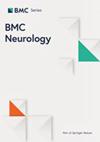缺血性脑卒中重症患者基数过高与死亡率之间的关系:一项回顾性队列研究
IF 2.2
3区 医学
Q3 CLINICAL NEUROLOGY
引用次数: 0
摘要
基底过高(BE)与许多疾病的死亡率有关。然而,缺血性脑卒中患者的基础代谢率与死亡率之间的关系仍不确定。我们的目的是研究重症监护室收治的脑卒中重症患者入院时的基础代谢率值与死亡率之间的关系。本研究共纳入 1572 名缺血性脑卒中患者(男性 863 人,女性 709 人)。采用多变量逻辑回归或 Cox 比例危险模型评估了 BE 与重症监护室(ICU)、住院、28 天和 1 年死亡率的关系。通过交互分析和亚组分析进一步评估了序贯器官衰竭评估(SOFA)评分(< 5 或 ≥ 5)对 BE 预后价值的潜在影响。观察到 BE 值小于 - 3 mmol/L、大于 3 mmol/L 和在 - 3 至 3 mmol/L 之间(正常 BE)的患者分别有 316 人(20.1%)、175 人(11.1%)和 1,081 人(68.8%)。限制性三次样条分析显示,BE 与死亡风险之间呈 U 型曲线。多变量分析表明,低 BE(<-3 mmol/L)患者的 ICU 死亡率(比值比 [OR],1.829;95% 置信区间 [CI],1.281-2.612;P = 0.001)、住院死亡率(OR,1.484;95% CI,1.077-2.045;P = 0.016)、28 天死亡率(危险比 [HR],1.522;95% CI,1.200-1.929;P = 0.001)和 1 年死亡率(HR,1.399;95% CI,1.148-1.705;P = 0.001)。亚组分析显示,SOFA评分≥5的患者结果一致。在缺血性脑卒中重症患者中,入ICU时初始BE<-3 mmol/L可能预示着ICU、住院、28天和1年死亡风险增加。本文章由计算机程序翻译,如有差异,请以英文原文为准。
Association between base excess and mortality in critically ill patients with ischemic stroke: a retrospective cohort study
Base excess (BE) is associated with mortality from many diseases. However, the relationship between BE and mortality in patients with ischemic stroke remains uncertain. Our aim is to investigate the relationship between BE values upon admission to the ICU and mortality rates in critically ill stroke patients. The current study enrolled 1,572 patients with ischemic stroke (863 males and 709 females). The associations of BE with intensive care unit (ICU), hospital, 28-day, and 1-year mortalities were assessed using multivariable logistic regression or Cox proportional hazards model. The potential impact of the Sequential Organ Failure Assessment (SOFA) score (< 5 or ≥ 5) on the prognostic value of BE was further evaluated with interaction and subgroup analyses. BE values less than − 3 mmol/L, greater than 3 mmol/L, and within − 3 to 3 mmol/L (normal BE) were observed in 316 (20.1%), 175 (11.1%), and 1,081 (68.8%) patients, respectively. The restricted cubic splines analyses revealed that a U-shaped curve between BE and the mortality risk. Multivariable analysis indicated that patients with low BE (<-3 mmol/L) had higher rates of ICU mortality (odds ratio [OR], 1.829; 95% confidence interval [CI], 1.281–2.612; P = 0.001), hospital mortality (OR, 1.484; 95% CI, 1.077–2.045; P = 0.016), 28-day mortality (hazard ratio [HR], 1.522; 95% CI, 1.200–1.929; P = 0.001), and 1-year mortality (HR, 1.399; 95% CI, 1.148–1.705; P = 0.001) than patients with normal BE. Subgroup analyses showed consistent results pertaining to SOFA scores ≥ 5. In critically ill patients with ischemic stroke, an initial BE of <-3 mmol/L at ICU admission may indicate an increased risk of ICU, hospital, 28-day, and 1-year mortalities.
求助全文
通过发布文献求助,成功后即可免费获取论文全文。
去求助
来源期刊

BMC Neurology
医学-临床神经学
CiteScore
4.20
自引率
0.00%
发文量
428
审稿时长
3-8 weeks
期刊介绍:
BMC Neurology is an open access, peer-reviewed journal that considers articles on all aspects of the prevention, diagnosis and management of neurological disorders, as well as related molecular genetics, pathophysiology, and epidemiology.
 求助内容:
求助内容: 应助结果提醒方式:
应助结果提醒方式:


